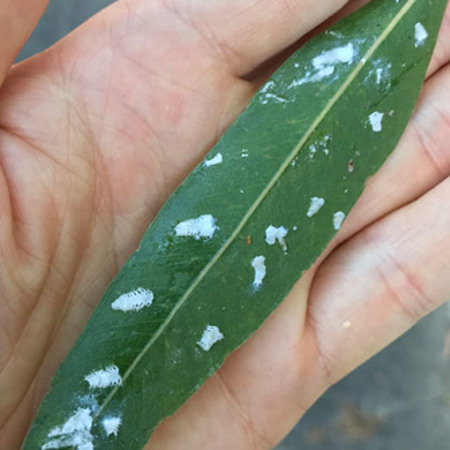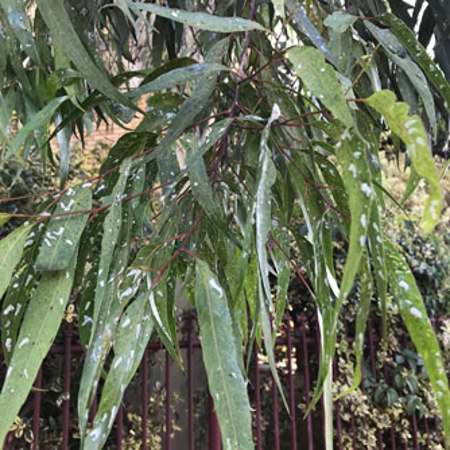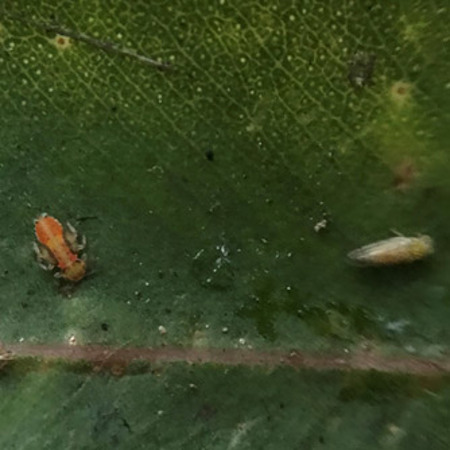Lerps
BackLerps are the shell or covering that some psyllid insects make during their juvenile stage. Psyllids are sap sucking insects usually only a few millimetres long and are easily overlooked. However the lerps are quite visible being up to 1cm long and with distinctive designs.
Each lerp is made from the waste excretion of a juvenile psyllid. As with many other sap sucking insects this waste is high in sugars and is sometimes called ‘honeydew’. It’s thought the lerp shell provides protection against the weather and predators. Ants can often be seen around the lerps collecting the sugary honeydew and fighting off predatory insects. Birds will also feed on them.
In small numbers lerps are nothing to be concerned about but problems can occur when they increase. In large numbers their feeding can cause leaf damage and dieback. Leaves become sticky from all the honeydew and sooty mould will then develop. Plants and pathways underneath the tree will also become a sticky mess and sooty mould can appear on them as well.
A large outbreak of lerps on a tree often indicates that the tree is under stress for other reasons.
Note that there are many different types of psyllids and not all create lerps. For example the pimpling of lilly pilly leaves is caused by a psyllid which doesn’t produce lerps.
Plant Attacked by Lerps
Psyllids can be a problem on a broad range of plants but the species that create lerps seem to only attack gum trees. This includes Eucalyptus, Angophora and Corymbia spp.
How To Organically Control Lerps
- Wipe leaves clean with a damp cloth or cut off infested sections.
- Restrict ant access by applying a band of horticultural glue around the main trunk.
- Weekly doses of OCP eco-seaweed to help reduce plant stress.
- Improve plant heath by assessing the growing conditions and make the necessary corrections. Ask yourself questions like:
- Is the soil compacted?
- What is the soil pH?
- Are the watering and fertilising levels correct?
- Does the tree get enough light?
- Is it the right species for your climate? etc.






